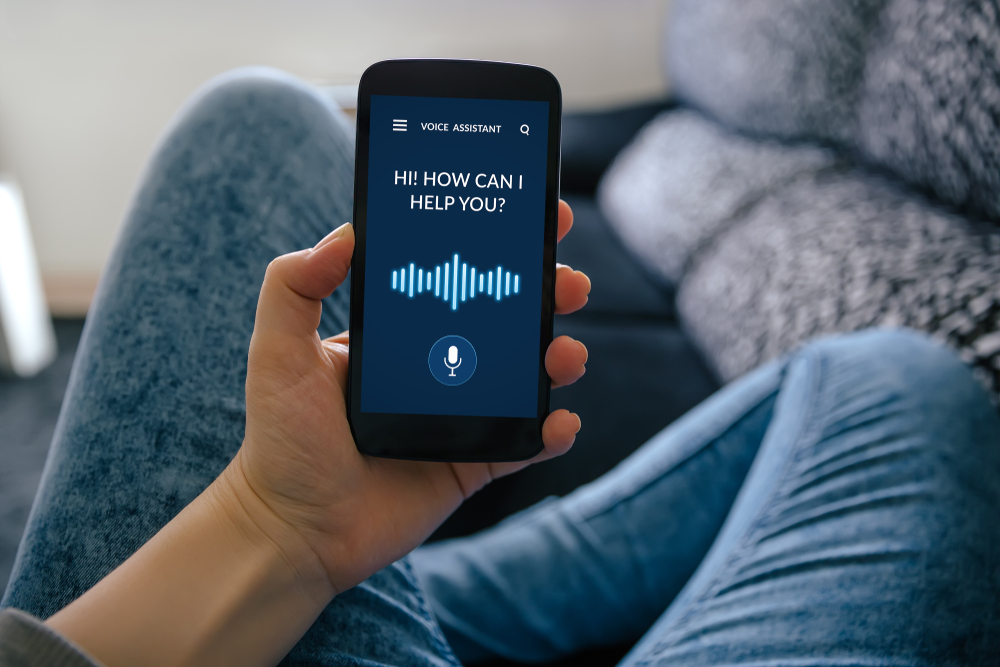Why Voice Assistants Are Gaining Momentum in Healthcare
Voice assistants have experienced growing popularity over the past few years and show no signs of slowing down.
Consider the findings of the 2022 Smart Audio Report from NPR and Edison Research:
- 62%—”of Americans 18+ use a voice assistant on any device, including smart speakers, smartphones, in-car systems and more.”
- 57%—”of voice command users use voice commands daily in 2022.”
- 53%—”of smart speaker owners who have heard an ad on their device say they are likely to respond to ads on their smart speaker.”
In healthcare, this technology has been gaining momentum for various applications—including patient education, patient care, and helping busy clinicians keep up with documentation. In various iterations, this is true across healthcare sectors—including hospital, homecare, and senior living settings.
Voice Assistants in Healthcare
In October of 2019, Orbita, Inc.—which touts itself in a press release as a “provider of healthcare’s most powerful conversational AI platform,” published its Voice Assistant Consumer Adoption Report for Healthcare 2019.
According to the release, Orbita commissioned Voicebot.ai, “the leading online publication and research source dedicated to voice and AI technologies,” to conduct the research.
The survey of 1,004 U.S. adults revealed:
- “7.5% of U.S. consumers have used voice assistants such as Alexa or Google Assistant for healthcare as of September 2019”
- “Nearly 52% would like to use voice assistants for healthcare use cases in the future”
- “18-29-year-olds are the most likely to have used a voice assistant for healthcare-related services, but 45-60-year-olds are the most bullish on the technology”
“This report is the first comprehensive analysis that considers how consumers are using voice assistants today for healthcare-related needs, explores features they’d like to see in the future, and highlights how provider and technology organizations have responded to the opportunity thus far,” said Orbita President Nathan Treloar in the statement. “Orbita is a known technology trailblazer in voice applications for healthcare and we are pleased to bring this research to our customers, our partners, and the healthcare industry at large.”
Bret Kinsella, Voicebot.ai founder and CEO, said, “We are pleased to collaborate with Orbita to publish the first comprehensive report analyzing the intersection of voice assistants and healthcare. Consumers are enthusiastic about the potential of these new technologies and we hope the data helps healthcare organizations better understand the market and make decisions about how they can leverage voice assistants to enhance patient engagement.”
Healthcare Voice Assistant Consumer Adoption Report 2022
In January of this year, Voicebot.ai published a follow-up report, its Healthcare Voice Assistant Consumer Adoption Report 2022.
In a post on the company’s website, Kinsella describes the results and compares them with those of the 2019 report.
“Consumer interactions with healthcare have changed dramatically since the onset of the COVID-19 pandemic,” he writes. “One of those shifts has been a surge in the use of voice assistants and other conversational AI technologies in healthcare. In 2019, Voicebot found that just 7.5% of U.S. adults had used a voice assistant for a healthcare need. That figure vaulted to 21.0% in 2021.”
Compared to the results of the 2019 report which found that over 50% of consumers were interested in using voice assistants for healthcare needs, 2021 data revealed an increase in that context to 56%.
Kinsella says such findings show that “demand for voice assistant-enabled services still significantly outstrips the availability offered by healthcare providers.”
“The rise in usage over the past two years appears to be driven by consumer interest in accessing information about illness (including COVID-19) and a greater supply of voice-enabled features by healthcare organizations,” he says.
Voice Assistants in Hospitals
SONIFI Health—which says it simplifies “complex technology with our interactive patient engagement solutions”—describes some of the ways voice assistants are being used in hospital settings.
In patient rooms, SONIFI Health says voice assistants provide a variety of benefits for both patients and clinicians:
- “With voice, clinicians have a hands-free option to streamline some in-room tasks, and patients have a convenient way to access what’s important to them.”
- “The option to use voice commands also helps patients who have mobility or dexterity issues and cannot fully use a traditional pillow speaker, or who are visually impaired and cannot easily view screens or printed information.”
- “Hospitals and other healthcare locations can create custom skills that integrate with their interactive TV, EHR, or other systems to achieve specific organizational or patient experience goals.”
Of course, patient privacy and security of protected health information (PHI) are critical concerns, and the company points out that voice solutions used in healthcare are specifically designed to address both.
“Software developers for healthcare voice technology take extra precautions to configure voice assistants that are appropriate and safe for patient and clinicians to use without worrying about security and privacy,” SONIFI Health says. The company notes that enterprise management configurations enable centralized control regarding which applications can and can’t be used.
It also lists six specific reasons for using voice assistants in patient rooms to enhance “staff and patient engagement strategies”:
- Clinical workflow improvement: “Saving nurses time and cutting out non-clinical tasks may help them feel less burned out and more focused on bedside interactions. …”
- Patient care engagement: “Inpatient facilities can schedule voice assistants to share prompts and reminders with patients during their stay. …”
- Discharge planning: “Voice assistant configurations may also help prepare patients for success after discharge. …”
- Patient comfort & safety: “Integrations with the facility’s building automation system and interactive TV platform can create voice-activated controls for the room environment and television in the room. …”
- Patient questions & requests: “Common questions patients have can be answered with programmed responses that play back on the voice assistant, or display on the TV, so nurse workflows aren’t interrupted. …”
- Positive distraction: “For some patients, the familiarity of a voice assistant may help them feel more at ease. …”
Some of the same dynamics may apply in senior living and homecare settings—depending upon the applications in use. Here are posts about both if you’d like to learn more:
- From iAdvance Senior Care: “The Promise of Voice Tech in Senior Living: A Q&A with Fahad Aziz of Caremerge”
- From Homecare Magazine: “Alexa, Take Care of Me: A look at how voice-first technology could alter homecare”
With the popularity of voice assistants gaining such momentum, they could serve as a valuable marketing tool if your organization is one that’s integrating their potential.
Contact us today to find out how we can help level up your healthcare marketing strategy.







 Ad Choices
Ad Choices